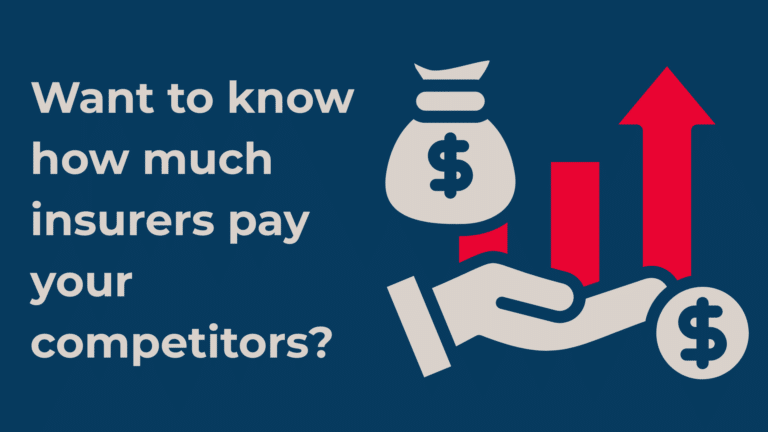Two-thirds of physicians say they are experiencing symptoms of burnout.
What can help ease the burden on providers? You might be surprised.
by Joe Ferro, President, Calm Waters AI
We need to talk about the B-word in healthcare. Burnout is an even more serious threat than many provider organizations realize.
According to a recent Harris Poll, 93% of surveyed physicians say they “feel burned out on a regular basis.” Almost half say their workload has become unsustainable.[1]
The administrative burden of documentation and coding isn’t the only driver of burnout, but it’s a big one. In one survey, 75% of physicians attributed their feelings of burnout to spending so much time using electronic health records (EHR) systems.[2]
The burden has given rise to what providers often call “pajama time”—the time they spend on paperwork after they go home. Today, pajama time adds 15 hours per week to the average physician’s workload.[3]
According to one study, providers spend an average of 16 minutes and 14 seconds per patient encounter using EHRs.[4] You can do the math. A provider seeing 16 patients daily will spend around 260 minutes—that’s four hours and 20 minutes—entering information into the EHR.
Everyone pays a price when EHRs and other administrative burdens leave providers feeling overwhelmed and burned out. The Medscape report revealed that 26% of providers say burnout makes them less careful about patient notes and documentation; besides the potential impact on patient care, documentation errors contribute to inaccurate billing, payment delays, and increased audit risk. Another study found that physicians suffering from burnout are more than twice as likely to be involved in patient safety incidents than those who do not feel burned out.[5]
Providers experiencing burnout are much more likely to leave the field or shift into positions where they no longer see patients. Studies suggest that physician turnover related to burnout costs the healthcare system over $260 million annually.[6] Losing a family medicine physician who generates $1.5 million in revenue, for example, could cost a provider group $130,000 each month until the vacancy is filled, and it takes an average of 4.3 months to permanently fill that role (and up to 10 months for a specialist). Meanwhile, according to Becker’s Hospital CFO Report, recruiting new physicians—interviewing expenses, relocation packages, signing bonuses, and student loan repayment—can run from $130,000 to nearly $400,000.[7]
There’s no panacea for all the bureaucratic, regulatory compliance, and payor-imposed burdens weighing on providers today. But:
Well-designed healthcare technology to support EHR use, practice management, and patient communication can reduce those burdens and relieve some of the stresses that directly contribute to burnout.
Please note the disclaimer “well-designed.” Not all technology has lived up to its promises. But we also see AI-powered systems that reduce administrative burdens meaningfully by automating routine tasks and streamlining workflows. This includes technologies that make providers’ jobs easier and less stressful while keeping them firmly in control (addressing physicians’ top concern about AI, the loss of human control in healthcare).[8]
Provider organizations will have to navigate among the growing number of technology offerings in the marketplace—and must understand that human intelligence will always remain essential to the success of AI; it’s never just plug-and-play.
These are both subjects for future blog entries. What’s important to note now is that the number of physicians who say they see AI as part of the solution outnumber those who remain pessimistic by nearly two-to-one. Providers want help. If we’re serious about reducing burnout, AI will be an essential part of the solution.
Joe Ferro is president of Calm Waters AI.
Ready to enhance revenue cycle performance and help ensure that providers’ documentation is complete and “bulletproof” before it leaves their desktops? View a demo of Calm Waters AI and learn more about our documentation improvement services with ChartPal.
[1] Nele Jessel, M.D., “As Clinician Burnout Rises, How Can Technology Help?”, Feb. 21, 2024, athenahealth: https://www.athenahealth.com/knowledge-hub/healthcare-technology/ai-help-clinician-burnout
[2] National Library of Medicine/National Center for Biotechnology Information: https://www.ncbi.nlm.nih.gov/pmc/articles/PMC5559244/
[3] “Physicians report 15 Hours of ‘Pajama Time,’” Healthcare IT News, Feb. 21, 2024: https://www.healthcareitnews.com/news/physicians-report-15-hours-pajama-time
[4] “Physician Time Spent Using the Electronic Health Record during Outpatient Encounters,” Anals of Internal Medicine, Jan. 14, 2020: https://www.acpjournals.org/doi/10.7326/M18-3684
[5] Alexander Hodkinson et al., “Associations of Physician Burnout with Career Engagement and Quality of Patient Care: Systematic Review and Meta-Analysis,” The BMJ, September 14, 2022.
[6] Physician Burnout Will Burn All of Us,” The Century Foundation, Oct. 25, 2023: https://tcf.org/content/report/physician-burnout-will-burn-all-of-us/
[7] Physician turnover: The High Costs & What Hospitals Can Do,” adfirehealth: https://adfirehealth.com/talent/blog/physician-turnover-costs/#:~:text=An%20American%20Medical%20Association%2Dbacked,until%20the%20vacancy%20is%20filled.
[8] Nele Jessel, M.D., “As Clinician Burnout Rises, How Can Technology Help?”, previously cited.




